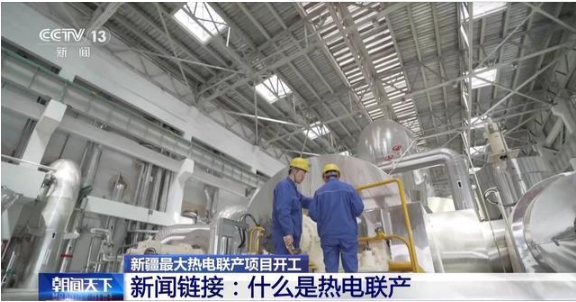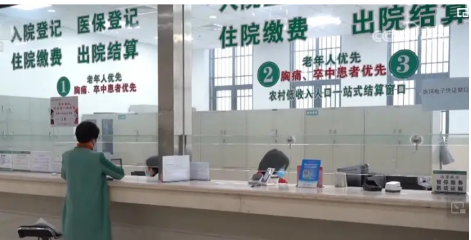Fermilab: Muon g-2 announces most precise measurement of the magnetic anomaly of the muon
The third and final result, based on the last three years of data, is in perfect agreement with the experiment’s previous results, further solidifying the experimental world average. This long-awaited value will be the world’s most precise measurement of the muon magnetic anomaly for many years to come.
Batavia, Ill., June 04, 2025 (GLOBE NEWSWIRE) -- Scientists working on the Muon g-2 experiment, hosted by the U.S. Department of Energy’s Fermi National Accelerator Laboratory, have released their third and final measurement of the muon magnetic anomaly. This value is related to g-2, the experiment’s namesake measurement. The final result agrees with their published results from 2021 and 2023 but with a much better precision of 127 parts-per-billion, surpassing the original experimental design goal of 140 parts-per-billion.
“The anomalous magnetic moment, or g–2, of the muon is important because it provides a sensitive test of the Standard Model of particle physics. This is an exciting result and it is great to see an experiment come to a definitive end with a precision measurement,” said Regina Rameika, the U.S. Department of Energy’s Associate Director for the Office of High Energy Physics.
This long-awaited result is a tremendous achievement of precision and will remain the world’s most precise measurement of the muon magnetic anomaly for many years to come. Despite recent challenges with the theoretical predictions that reduce evidence of new physics from muon g-2, this result provides a stringent benchmark for proposed extensions of the Standard Model of particle physics.
“This is a very exciting moment because we not only achieved our goals but exceeded them, which is not very easy for these precision measurements,” said Peter Winter, a physicist at Argonne National Laboratory and co-spokesperson for the Muon g-2 collaboration. “With the support of the funding agencies and the host lab, Fermilab, it has been very successful overall, as we reached or surpassed pretty much all the items that we were aiming for.”
“For over a century, g-2 has been teaching us a lot about the nature of nature,” said Lawrence Gibbons, professor at Cornell University and analysis co-coordinator for this result. “It’s exciting to add a precise measurement that I think will stand for a long time.”
The Muon g-2 (pronounced “gee minus two”) experiment looks at the wobble of a fundamental particle called the muon. Muons are similar to electrons but about 200 times more massive; like electrons, muons have a quantum mechanical property called spin that can be interpreted as a tiny internal magnet. In the presence of an external magnetic field, the internal magnet will wobble — or precess — like the axis of a spinning top.
The precession speed in a magnetic field depends on properties of the muon described by a number called the g-factor. Theoretical physicists calculate the g-factor based on the current knowledge of how the universe works at a fundamental level, which is contained in the Standard Model of particle physics.
Nearly 100 years ago, the value of g was predicted to be 2. But experimental measurements soon showed g to be slightly different from 2 by a quantity known as the magnetic anomaly of the muon, aμ, calculated with (g-2)/2. The Muon g-2 experiment gets its name from this relation.
The muon magnetic anomaly encodes the effects of all Standard Model particles, and theoretical physicists can calculate these contributions to an incredible precision. But previous measurements taken at Brookhaven National Laboratory in the late 1990s and early 2000s showed a possible discrepancy with the theoretical calculation at that time.
When experiment doesn’t align with theory, it could indicate new physics. Specifically, physicists wondered if this discrepancy could be caused by as-yet undiscovered particles pulling at the muon’s precession.
So physicists decided to upgrade the Muon g-2 experiment to make a more precise measurement. In 2013, Brookhaven’s magnetic storage ring was transported from Long Island, New York, to Fermilab in Batavia, Illinois. After years of significant upgrades and improvements, the Fermilab Muon g-2 experiment started up on May 31, 2017.
In parallel, an international collaboration of theorists formed the Muon g-2 Theory Initiative to improve the theoretical calculation. In 2020, the Theory Initiative published an updated, more precise Standard Model value based on a technique that uses input data from other experiments.
The discrepancy with the result from that technique continued to grow in 2021 when Fermilab announced its first experimental result, confirming the Brookhaven result with a slightly improved precision. At the same time, a new theoretical prediction came out based on a second technique that heavily relies on computational power. This new number was closer to the experimental measurement, narrowing the discrepancy.
Recently, the Theory Initiative published a new prediction combining the results of several groups that used the new computational technique. This result remains closer to the experimental measurement, dampening the possibility of new physics. However, the theoretical effort will continue to work to understand the discrepancy between the data-driven and computational approaches.
The latest experimental value of the magnetic moment of the muon from the Fermilab experiment is:
aμ = (g-2)/2 (muon, experiment) = 0.001 165 920 705 +- 0.000 000 000 114(stat.)
+- 0.000 000 000 091(syst.)
This final measurement is based on the analysis of the last three years of data, taken between 2021 and 2023, combined with the previously published datasets. This more than tripled the size of the dataset used for their second result in 2023, and it enabled the collaboration to finally achieve their precision goal proposed in 2012.
It also represents an analysis of the experiment’s best-quality data. Toward the end of their second data-taking run, the Muon g-2 collaboration finished tweaks and enhancements to the experiment that improved the quality of the muon beam and reduced uncertainties.
The Muon g-2 collaboration describes the result in a paper that they submitted today to Physical Review Letters.
“As it has been for decades, the magnetic moment of the muon continues to be a stringent benchmark of the Standard Model,” said Simon Corrodi, assistant physicist at Argonne National Laboratory and analysis co-coordinator. “The new experimental result sheds new light on this fundamental theory and will set the benchmark for any new theoretical calculation to come.”
A future experiment at the Japan Proton Accelerator Research Complex will likely make another measurement of the muon magnetic anomaly in the early 2030s, but, initially, they won’t achieve the same precision as Fermilab.
Meanwhile, the Theory Initiative will continue working to resolve the inconsistency between their two theoretical predictions.
The Muon g-2 collaboration is made up of nearly 176 scientists from 34 institutions in seven countries. Marco Incagli, a physicist with the Italian National Institute for Nuclear Physics at Pisa and co-spokesperson for Muon g-2, emphasized that the internationality of the collaboration was key to the success of the experiment.
Unusually, the scientists also represent a variety of physics areas. “This experiment is quite peculiar because it has very different ingredients in it,” said Incagli. “It is really done by a collaboration among communities that normally work on different experiments.”
Unlike other high-energy physics experiments, Muon g-2 needed more than just high-energy physicists; the collaboration is also composed of accelerator physicists, atomic physicists and nuclear physicists. “It was very valuable to see that, when we had all these different experts come together, we could solve items that probably one group could not have done alone,” said Incagli.
While the experiment’s main analysis has come to an end, there is more to be mined from the six years of Muon g-2 data. In the future, the collaboration will produce measurements of a property of the muon called the electric dipole moment as well as tests of a fundamental property of physical laws known as charge, parity, and time-reversal symmetry.
“It’s a really beautiful experiment,” said Gibbons. “The data that comes out is really exquisite. It’s been a privilege to have access to this data and analyze it.”
“Of course, it’s sad to end such an endeavor because it’s been a large part of many of our collaborators’ lives,” said Winter, who has been part of the collaboration since 2011. “But we also want to move to the next physics that’s out there, to do our best to advance the field in other areas.
“I think it will be a textbook experiment that will be a long-lasting reference for many future decades to come,” Winter added.
Fermi National Accelerator Laboratory is America’s premier national laboratory for particle physics and accelerator research. Fermi Forward Discovery Group manages Fermilab for the U.S. Department of Energy Office of Science. Visit Fermilab’s website at www.fnal.gov and follow us on social media.
Attachments
- 喜讯!仰仪科技大型电池绝热量热仪BAC-420A荣获“国产好仪器”称号
- 儒意+万达打通提速,内容运营新范式初露端倪
- 南宁福康医院可靠吗 让患者放心的医院
- 韩林子Ⅱ人类概论(21---30)
- 理大学者发现调节眼压的关键机制 有望启发青光眼治疗方案
- 九章云极DataCanvas公司「算力包」产品璀璨亮相2024中国算力大会!
- 源真沉香20年沉香领域的领军者
- 鼎阳科技马来西亚生产基地正式投产,国际化布局再添重要支点
- 平安人寿河北分公司:别让网络误导带偏你的保险选择
- KnowBe4将收购Egress
- 愿景娱乐CEO关明贺入选“九千光年俱乐部” 做影响未来的青年领航人
- 当流量和排名退热,酒店未来终将回归客户体验
- 共创探伤机行业平台
- 满怀爱国之情,归国科学家深圳创业
- 与安全“童”行 肯德基守护未来之星
- 为雪域高原乡村振兴发挥保险作用——中国平安在西藏那曲比如县开展“牦牛险”的背后
- 尼尔森IQ宣布溥嵩凌(Jason Spencer)出任消费者研究(CMI)中国区总经理
- Survey Reveals Accountants Play Vital Role In Driving Financial Transformation for Organizations
- TATA木门举办第四届星匠安装大赛,以工匠精神向奥运冠军致敬
- WS虚拟仙境之旅:科技魔法师如何用WhatsApp营销工具织就商业传奇
- FastMoss发布2024年TikTok短视频生态白皮书,美区黑五单日约1.3亿美金,短视频电商在全球突飞猛进
- 技术引领·无镜自由!福州爱尔眼科医院“微创全飞秒精准4.0-VISULYZE”重磅发布
- 上千名中小学生边玩边学,在搓药丸、辨百草中感受老祖宗的智慧
- Your World empowers young people to become leaders and agents of change
- Bitget Celebrates Bitcoin Pizza Day by Distributing Over 5000 Pizzas in Over 20 Cities Worldwide
- SCHMID Group Closes Business Combination and Begins Trading on the Nasdaq Stock Exchange
- 向上,立未来 上汽奥迪携全系车型登陆2024第十八届北京国际车展
- 泰雷兹携手Cubic推出新一代eSIM解决方案,助力网联汽车发展
- Siloam Hospitals Group and Philips sign AI capability MoU to support Indonesia’s healthcare transfor
- 艺境交响万象 声色漫游共生 成都IFS首届公共艺术计划盛大启幕
推荐
-
 新增供热能力3200万平方米 新疆最大热电联产项目开工
昨天(26日),新疆最大的热电联产项目—&md
资讯
新增供热能力3200万平方米 新疆最大热电联产项目开工
昨天(26日),新疆最大的热电联产项目—&md
资讯
-
 男子“机闹”后航班取消,同机旅客准备集体起诉
1月4日,一男子大闹飞机致航班取消的新闻登上
资讯
男子“机闹”后航班取消,同机旅客准备集体起诉
1月4日,一男子大闹飞机致航班取消的新闻登上
资讯
-
 私域反哺公域一周带火一家店!
三四线城市奶茶品牌茶尖尖两年时间做到GMV
资讯
私域反哺公域一周带火一家店!
三四线城市奶茶品牌茶尖尖两年时间做到GMV
资讯
-
 王自如被强制执行3383万
据中国执行信息公开网消息,近期,王自如新增一
资讯
王自如被强制执行3383万
据中国执行信息公开网消息,近期,王自如新增一
资讯
-
 抖音直播“新红人”进攻本地生活领域
不难看出,抖音本地生活正借由直播向本地生活
资讯
抖音直播“新红人”进攻本地生活领域
不难看出,抖音本地生活正借由直播向本地生活
资讯
-
 大家一起关注新疆乌什7.1级地震救援见闻
看到热气腾腾的抓饭马上就要出锅、村里大家
资讯
大家一起关注新疆乌什7.1级地震救援见闻
看到热气腾腾的抓饭马上就要出锅、村里大家
资讯
-
 国足13次出战亚洲杯首次小组赛0进球
北京时间1月23日消息,2023亚洲杯小组
资讯
国足13次出战亚洲杯首次小组赛0进球
北京时间1月23日消息,2023亚洲杯小组
资讯
-
 中央气象台连发四则气象灾害预警
暴雪橙色预警+冰冻橙色预警+大雾黄色预警+
资讯
中央气象台连发四则气象灾害预警
暴雪橙色预警+冰冻橙色预警+大雾黄色预警+
资讯
-
 周星驰新片《少林女足》在台湾省举办海选,吸引了不少素人和足球爱好者前来参加
周星驰新片《少林女足》在台湾省举办海选,吸
资讯
周星驰新片《少林女足》在台湾省举办海选,吸引了不少素人和足球爱好者前来参加
周星驰新片《少林女足》在台湾省举办海选,吸
资讯
-
 透过数据看城乡居民医保“含金量” 缴费标准是否合理?
记者从国家医保局了解到,近期,全国大部分地区
资讯
透过数据看城乡居民医保“含金量” 缴费标准是否合理?
记者从国家医保局了解到,近期,全国大部分地区
资讯


